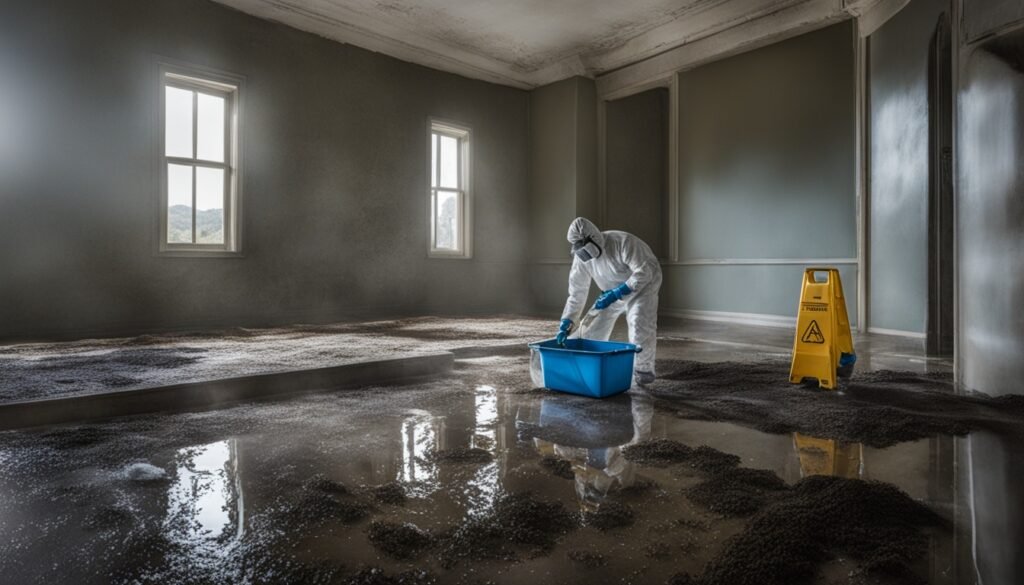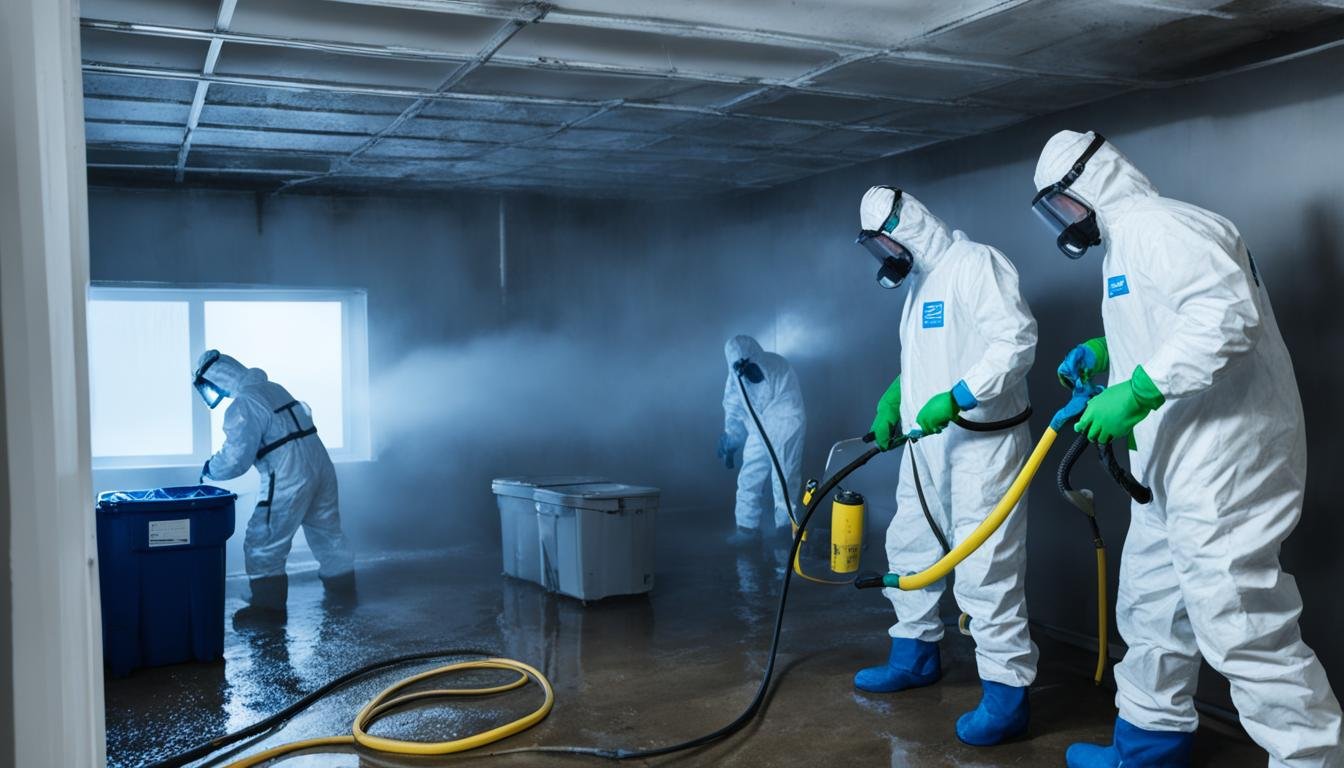Did you know that mold spores can start to grow on damp surfaces within just 24 to 48 hours? This quick growth highlights how important it is to deal with water leaks and moisture right away. If left unchecked, mold can infest spaces like crawlspaces, attics, and walls. It can also find its way into basements with poor drainage.
Ignoring a water leak can result in many problems. These include costly repairs, serious health risks, and a potential crisis for your home and family.
Key Takeaways
- Mold can grow quickly, within 24-48 hours, on damp surfaces
- Stopping leaks, improving ventilation, and routing water away from the foundation are effective defenses against mold
- Prompt action to stop water leaks and clean up the mess can prevent permanent damage and save thousands in eradication costs
- Certified professional mold inspectors can accurately detect the presence, source, and severity of mold growth
- Maintaining proper moisture levels and ventilation is crucial to discourage mold growth in the home
Understanding the Risks of Mold After Water Damage
What is Mold and How Does It Thrive?
Mold and mildew are fungi needing moisture to grow. They are tiny and spread through the air. You might know some like Aspergillus, Cladosporium, and the feared Stachybotrys Chartarum, or black mold. These grow well in wet, closed-off spaces, especially after water damage.
Health Hazards Associated with Mold Exposure
Mold can cause mild to severe health issues. It can lead to sneezing, skin rashes, and watery eyes. More serious cases might involve breathing issues or even neurological problems. Taking care of mold quickly is very important for your health.
| Mold Type | Potential Health Effects |
|---|---|
| Aspergillus | Coughing, wheezing, shortness of breath |
| Cladosporium | Runny nose, sneezing, itchy eyes, throat irritation |
| Stachybotrys (Black Mold) | Headaches, fatigue, respiratory issues |
| Penicillium | Coughing, wheezing, shortness of breath, hypersensitivity pneumonitis |
Some groups, like kids, the elderly, or those with asthma, are more at risk. Mycotoxins from mold can have serious effects, even causing cancer in some cases.

Mold can trigger various allergies and health issues. These include sneezing, coughing, and watery eyes. It might also cause headaches, skin rashes, and fatigue. Removing mold quickly and properly is key to keeping everyone safe and healthy.
Effective Mold Elimination After Water Leaks
Swift action is key when water damage hits your home. You’ve got 24 to 48 hours to get water out and dry everything properly. It’s important to keep your home dry using Dehumidification and Ventilation.
When fixing your home, use materials that stop mold, like mold-resistant drywall and paint. They help block mold off, easing your mind and lowering future risk.
Sometimes, you need Professional Remediation, especially for dangerous mold types or big problems. Your home insurance might cover mold damage, but know your policy well and keep good records.
“Mold and mildew can proliferate rapidly within 24 to 48 hours of water damage.”
The Restoration Process might look hard but with a good plan, you can beat mold. Act fast, use the best materials, and get help if needed. This way, you protect your home and your health.

Remember, mold loves wet, dark places. So, fix any leaks fast to keep your home mold-free and healthy for the long haul.
Conclusion
Mold elimination is crucial after water leaks for a safe, healthy home. It’s key to act fast, find problems early, and take quick steps. With the right awareness, prevention, and help when needed, you can protect your home and family.
Excess moisture is the main cause of mold, so drying out wet areas fast is vital. Restoration companies can thoroughly dry these spaces to stop mold. Working with experts ensures you tackle mold safely and effectively.
Preventing and fixing mold is a long-term investment in your home and family’s health. Stay alert, act fast on any water or mold issues, and team up with trusted professionals. Doing so will help you enjoy your home without worry about mold.
FAQ
What is mold and how does it thrive?
What are the health hazards associated with mold exposure?
How can I effectively eliminate mold after water damage?
Source Links
- https://www.familyhandyman.com/article/10-tips-for-dealing-with-water-damage-mold-and-mildew/
- https://www.gpinspect.com/article/what-to-do-water-damage-mold/
- https://www.puroclean.com/pembroke-pines-fl-puroclean-pembroke-pines/blog/mold-from-water-leak-in-ceiling/
- https://restorationxperts.net/health-risks-of-mold-from-water-damage-explained/
- https://dryeffect.com/mold-removal-after-water-damage/
- https://360haz.com/the-hidden-dangers-of-mold-after-water-damage/
- https://greenworksllc.com/mold-after-water-damage/
- https://jenkinsrestorations.com/how-to-prevent-mold-after-water-damage/
- https://servicemasteroflakeshore.com/how-to-check-for-mold-after-water-damage/
- https://moldcontrolpanama.com/how-to-prevent-mold-after-a-water-leak/
- https://ors.od.nih.gov/sr/dohs/Documents/moisture-and-mold-remediation-sop.pdf
- https://www.fastacservice.com/2024/02/mastering-mold-effective-remediation-and-prevention-after-water-leaks/


